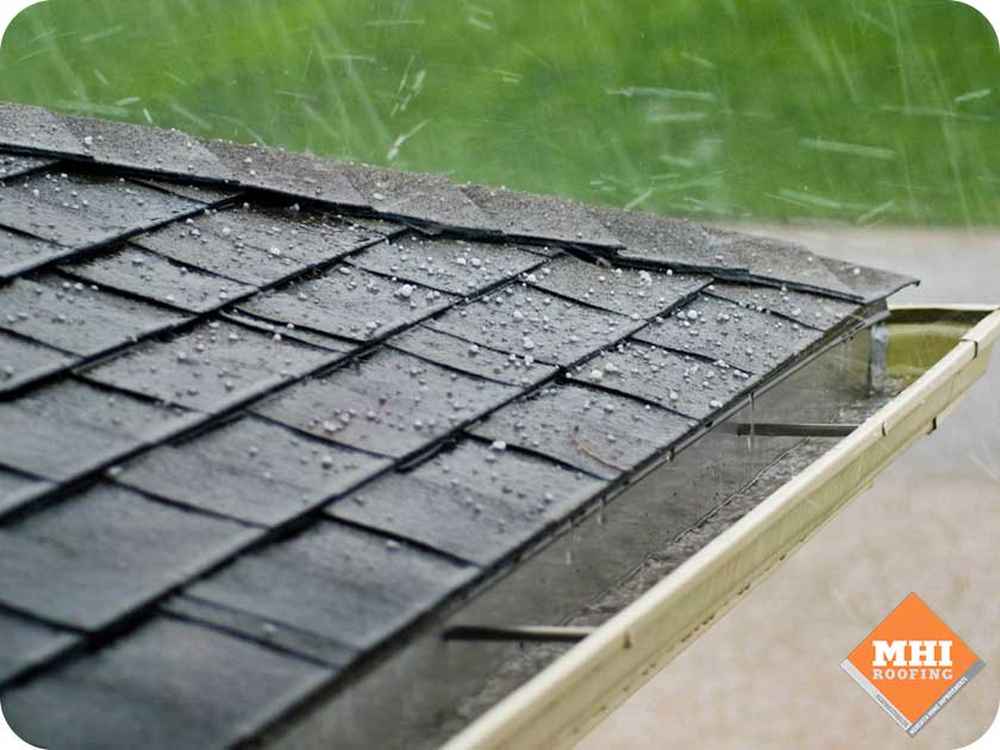Hail damage can range from cosmetic issues to severe damage that requires immediate repair. As a homeowner, knowing how to identify hail damage can help prevent roofing issues caused by ignoring such kinds of damage. In today’s post, the new roof contractors at MHI share a quick guide on identifying hail damage.
Size Matters
Hailstones are typically as dense as regular stones. The bigger they are, the greater the damage they can inflict. After a hailstorm passes, take a look at hailstones on the ground and note the average size. Document their sizes by taking photos of them beside a coin, ruler, or tape measure, in case you’d need to file an insurance claim.
Hailstones that are smaller than a quarter generally cause little damage to a rooftop, but it may cause splitting on roofs that are beyond their expected life span. Hailstones that are about the size of a walnut can cause some damage in the form of dents. If you find hailstones that are much bigger, make an appointment with your roof repairing professional.
The Types of Hail Damage
The following are some of the most common types of roofing hail damage:
Granule loss — Granules on asphalt shingles protect the asphalt layer from UV damage, in addition to providing color, as well as other features like algae resistance. Impact caused by hailstones can knock these granules from the roofing surface and may expose the asphalt layer underneath. Some of the granules end up in the gutters along with rainwater runoff.
Cracking or splitting — Severe impact caused by large hailstones can cause the shingles to crack, where shingles remain whole, or split, where shingles get torn off the roof. In either case, this can leave the roofing underlayment vulnerable to water infiltration the next time it rains.
Dents or punctures — Sometimes insurance adjusters misidentify hail damage and write them down as roof blisters, which is why you need a roofing contractor on site after a hailstorm. This is because dents caused by hail damage are typically covered by insurance; roof blisters are not. On metal roofing systems, hailstone impact can result in punctures that may lead to leaks.
MHI is your leading provider of exterior services. Give us a call at (412) 831-9991. You can also fill out our contact form to schedule an appointment.

